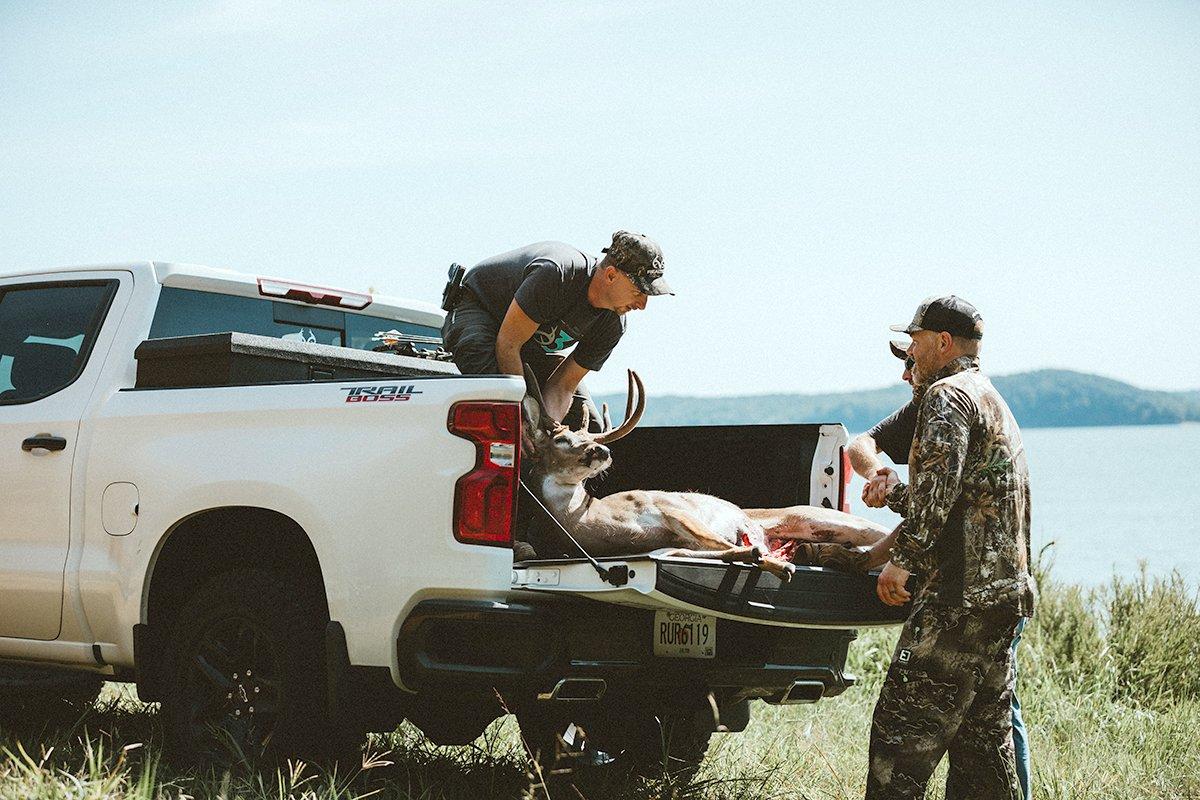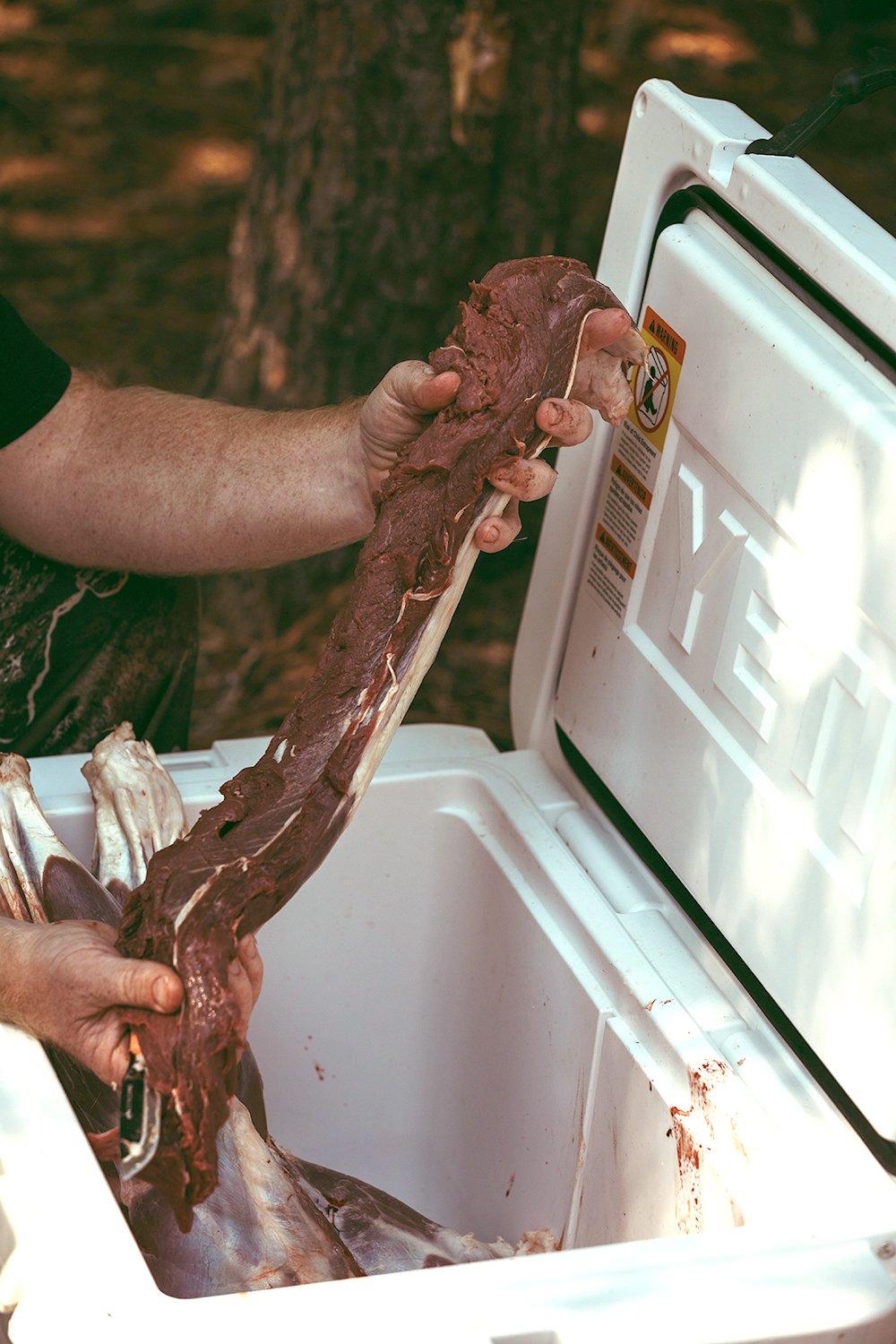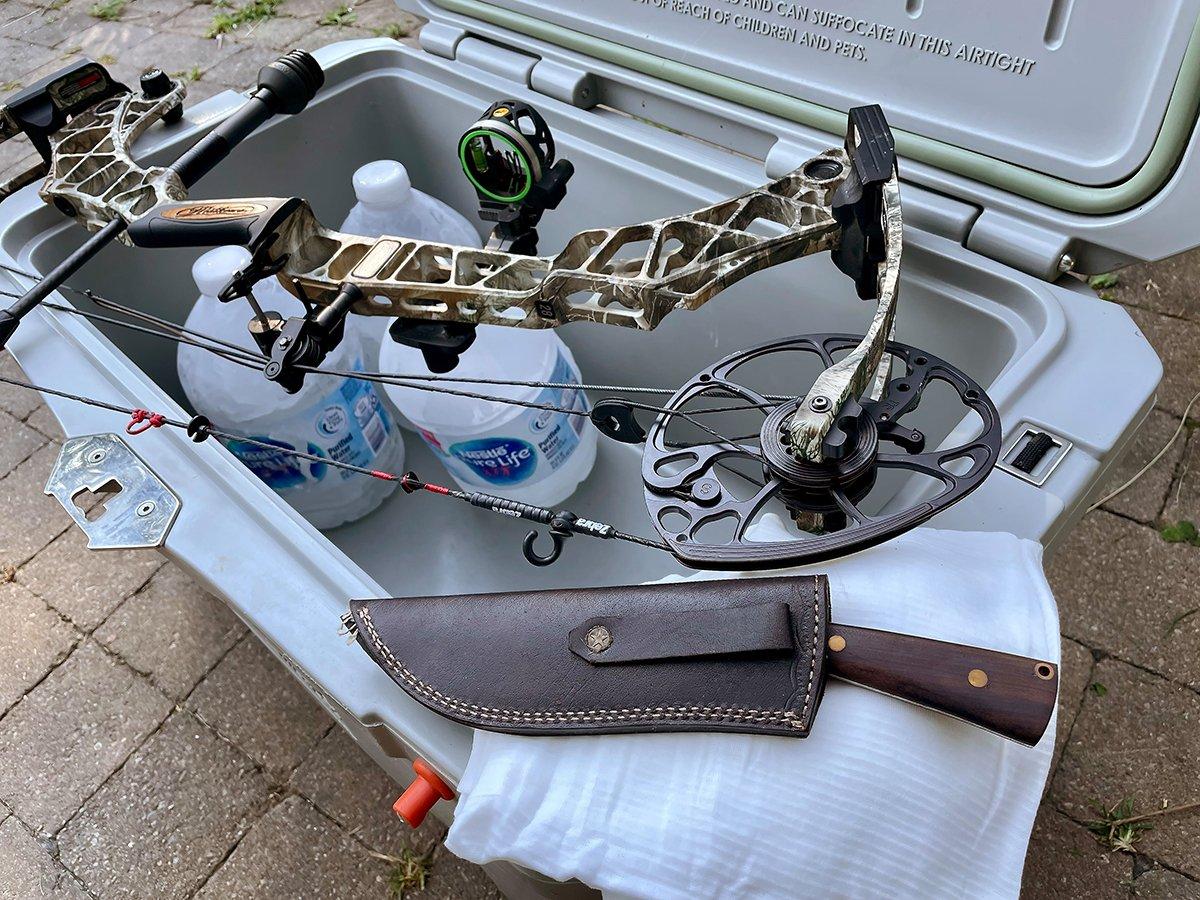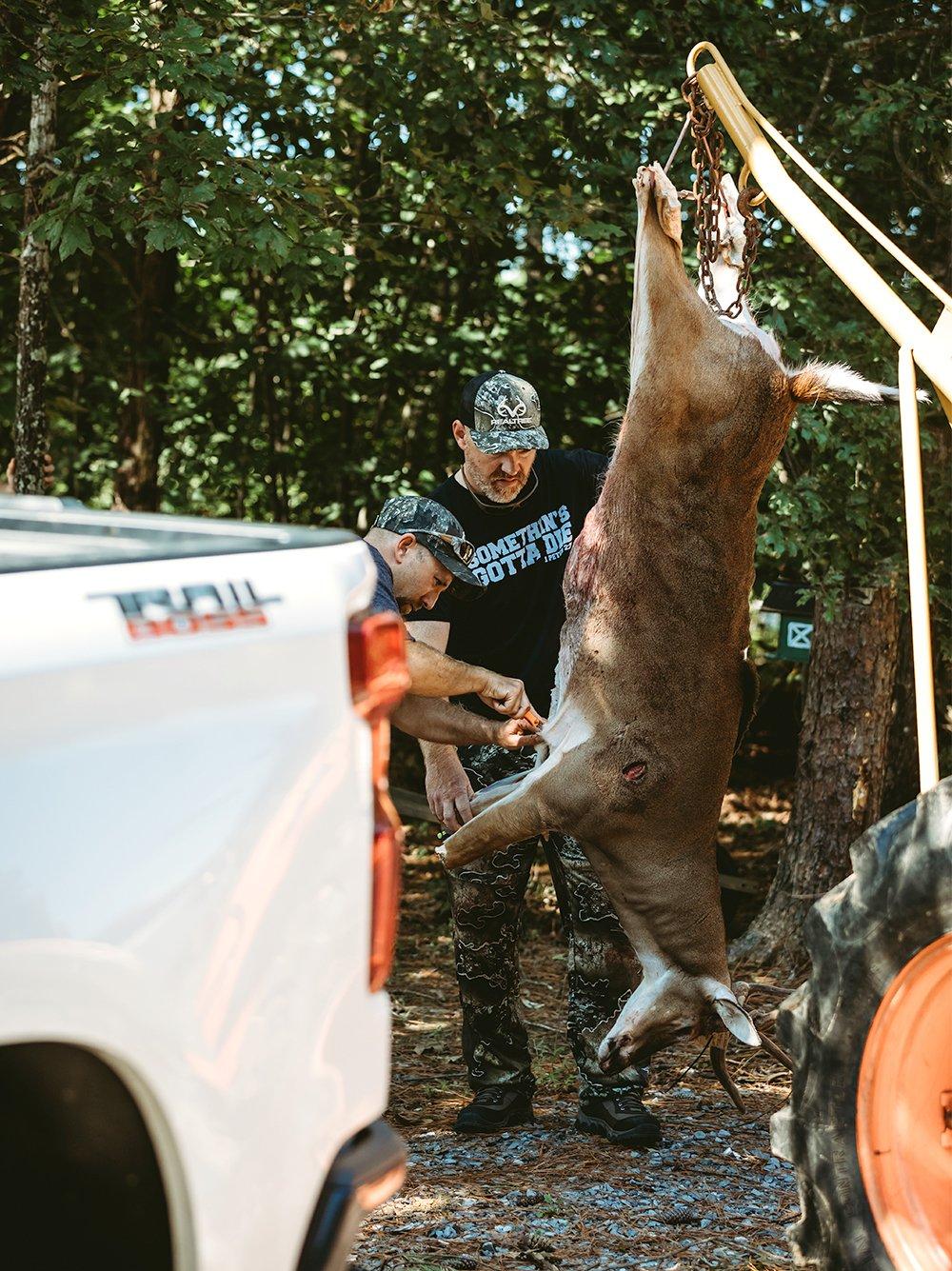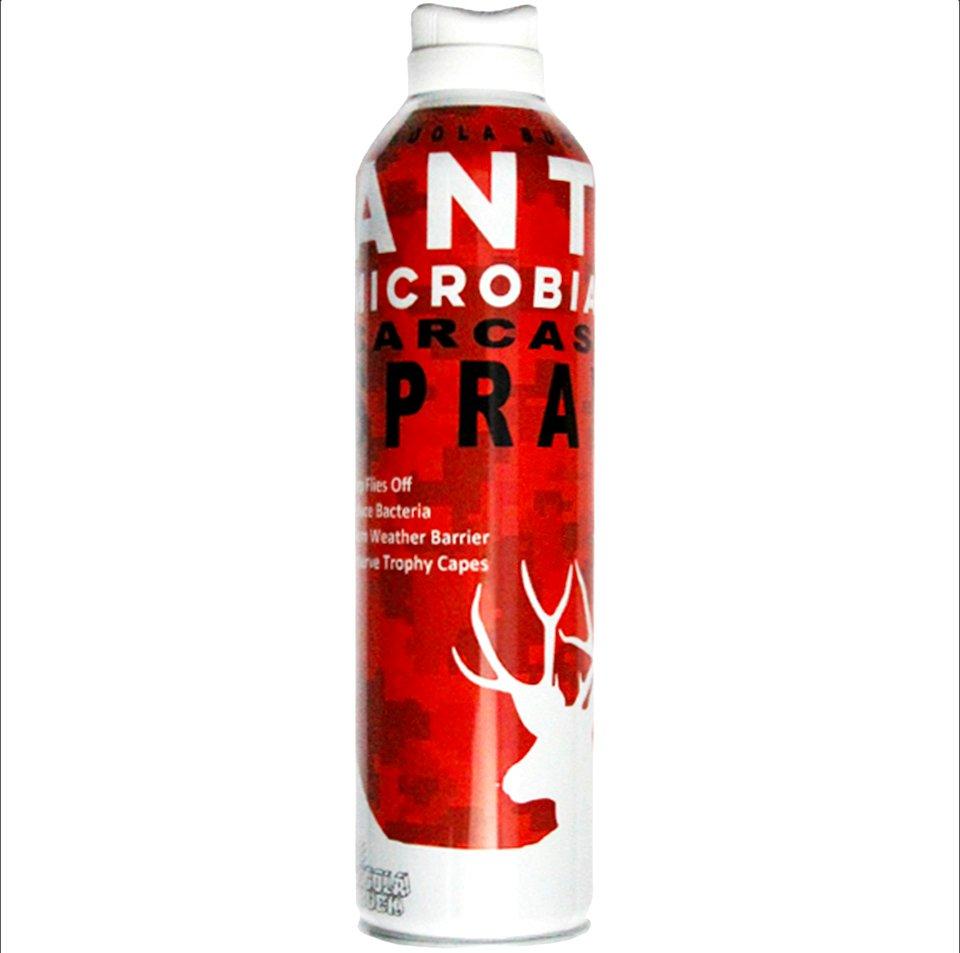Hunting while it's hot requires preparation. From fly spray to ice blocks, the author never heads to the woods without these items in the truck
The shot looked perfect, and it sounded like the deer crashed nearby. Awesome. But it's 90 degrees, and you are more than an hour from the closest meat locker. What now?
For a lot of us, deer season begins while the weather is still pretty warm, and maybe downright hot. At temperatures like we see in September here in Kentucky, bacteria can spread on your venison in a hurry.
After your deer is down isn't the time to come up with a game plan. Better to be prepared before you ever climb into the stand. If I can't get my deer into a walk-in cooler in about 30 minutes on a hot weather hunt, I like to bone or quarter it out and get it on ice. Here are a few of the tools and techniques I use on early season hunts.
(Keep cool while it's hot: Realtree Edge Camo Short Sleeve Performance Shirt)
Knives
For most of us, it sounds a little ridiculous that someone might go hunting without a knife, but it happens. It's happened to me. I stuck my favorite skinning knife in my backpack in preparation for an evening hunt, then decided last minute to leave the pack in the truck. In the rush to get to my stand, I never thought to grab it. I shot a deer, and when I reached for my pocketknife, I realized it was in the shorts I had changed out of before leaving the truck.
Luckily, that deer went down at the edge of a field, and I was able to go get my truck and get back to it in just a few minutes. If I'd been in a more remote location, I would've had a brutal drag to get the deer back to the truck before it spoiled.
Even if it's just a heavy-duty folding pocketknife, make sure a knife is on your last-minute checklist. While we are on the subject, a small folding saw makes short work of bones when quartering a deer in the field.
Coolers
Once deer season starts, my truck bed is rarely without a pair of rotomolded coolers in the 50- to 65-quart range. Combined, they will hold even the largest skinned and quartered buck. If you bone out your deer in the field, one cooler will usually hold the meat.
Since most of my hunting spots aren't close to a store where I can buy ice as needed, I take ice with me on every hunt. We hunt a lot, so buying a bag or two for every trip gets expensive. Instead, freeze a few gallon jugs or 2-liter soda bottles. Before you head out, stick them in one of the coolers. They will stay frozen up to a couple days. If your hunt isn't successful, just drop them back into the freezer when you get home so they will be ready for the next hunt.
Gambrel and Rope
You can skin and quarter a deer on the ground if you need to, but my back and knees prefer I complete the task standing up. A gambrel and rope make getting a deer off the ground much easier. Adding a pulley to the system allows even a lone hunter to lift their deer to an easy working height.
I like a pre-rigged system with a double pulley, one at the top and one near the gambrel. Many of these systems also feature a locking mechanism so that once you get your deer up off the ground, you simply give the working end of the line a hard tug to lock everything in place.
I usually attach an additional 30 feet of rope to the eye above the top pulley so that I can toss it over a limb and pull everything up high before lowering the gambrel and hooking it to my deer. If you don't have a limb handy, check out one of the many receiver hitch-mounted hoist systems for your truck. Many of these come with a gambrel and pulley system already installed.
Game Bags
Western big game hunters almost never go afield without a few quality game bags. They're a pretty good idea for Eastern whitetail hunters as well. If you have to quarter and hang your deer for a while before you can get it into a cooler, placing the meat into a breathable cloth game bag and suspending it from a limb will let the meat cool and keep the flies away.
If we have to tote quarters out on pack frames, we always put the meat into a bag before strapping it on. This keeps the meat clean and bug free.
Game bags are lightweight and fold down to almost nothing, making it easy to stuff three or four into the cargo pocket of your hunting pants. I prefer washable, reusable bags. Some of the newer game bags have been treated with an antimicrobial coating and help to prevent bacteria, even in warm weather.
Antimicrobial Spray
This is a new one for a lot of hunters. I'll admit, I was a little skeptical until I tried it. These sprays are applied directly to the skinned-out meat. They reduce bacteria growth on the meat, repel flies and other insects, and prevent mold formation. You can spray it directly on the meat or onto cloth game bags.
I still try to get my meat cooled down as quickly as possible, but I firmly believe the spray buys me some extra time. I know for a fact it keeps the flies away. I've watched them swarm in the air around freshly skinned quarters without a single fly landing on the meat after it had been sprayed. No flies on the meat mean no eggs or maggots later on.
I've been using the Koola Buck brand, but there are several on the market. All of them are safe to apply directly to meat you intend to eat. I just give mine a good rinse before the final butchering, just like I do anytime I process venison or other game meat.

